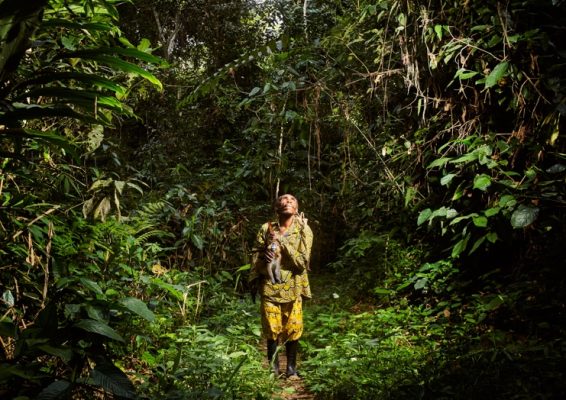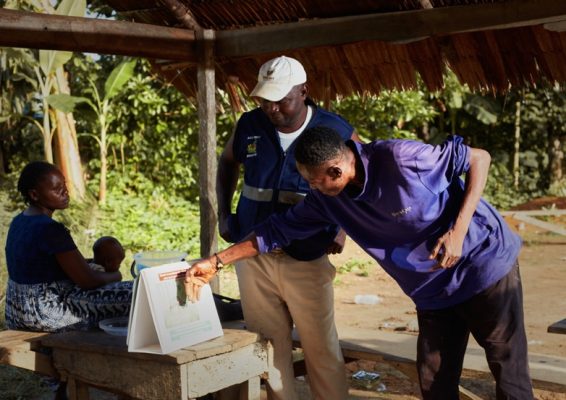In the biodiverse forests and rural communities of southern Cameroon, wild meat plays a vital role in local diets and economies. Yet, this practice carries unseen dangers—zoonotic diseases that can leap from animals to humans through improper handling or consumption. From common food-borne pathogens like Salmonella and Giardia to rarer deadly viruses such as Ebola or Marburg viruses, which can cause hemorrhagic fever. The risks are real and often overlooked.
“We aimed to understand what communities knew about the risk of becoming sick from handling wild meat and if they knew how to avoid exposure to zoonotic diseases,” said Amy Ickowitz, principal investigator for the project Mitigating Risks of Disease Transmission in the Wild Meat Food Chain from Forest to Fork in Cameroon.
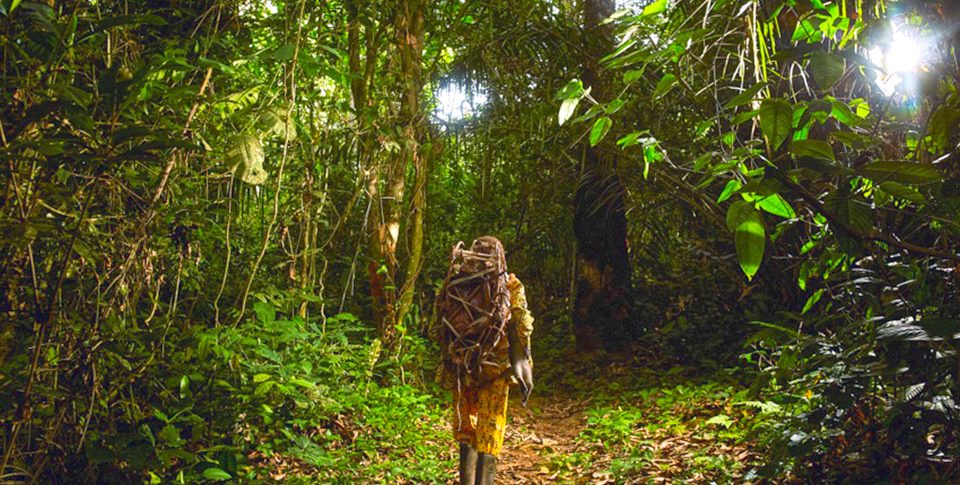
Between September and November 2022, the project team embarked on a large-scale effort to understand wild meat practices in the region. They conducted focus groups, interviews and surveys involving nearly 2,400 people across 44 villages near the Dja Faunal Reserve in southern Cameroon and around Boumba Bek National Park in eastern Cameroon. The findings revealed a stark reality.
The survey results were sobering. While hunting is a vital source of both food and income, awareness of the health risks associated with handling wild meat was alarmingly low. Fewer than 15% of households expressed concern about contracting diseases from infected animals. “Only 55% of respondents reported washing their hands with soap after handling wild meat and a mere 6% cleaned surfaces with soap after cutting it,” Ickowitz noted.

Over half of the survey respondents admitted to cutting themselves while butchering or preparing meat, exposing themselves to potentially dangerous pathogen transmission from animal fluids. Shockingly, four out of 10 confessed to consuming or selling meat from animals that had shown clear signs of illness.
Scientists revisited the communities involved in the surveys to share their findings and discuss practical recommendations for minimizing risky practices and reducing health risks. Armed with new information, local residents showed a heightened interest in adopting safer practices to protect themselves and their families.
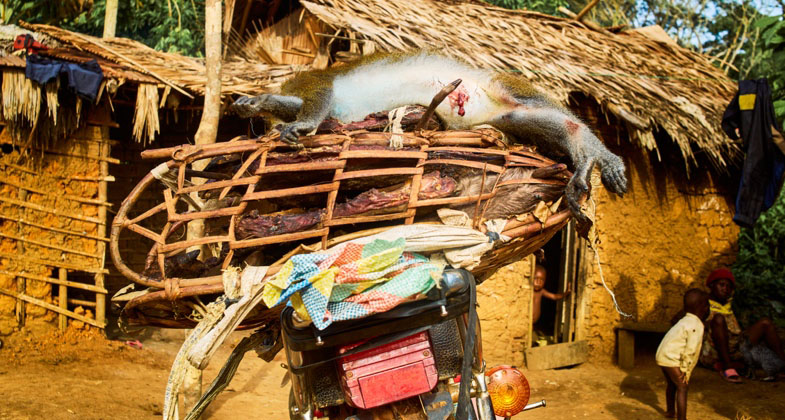
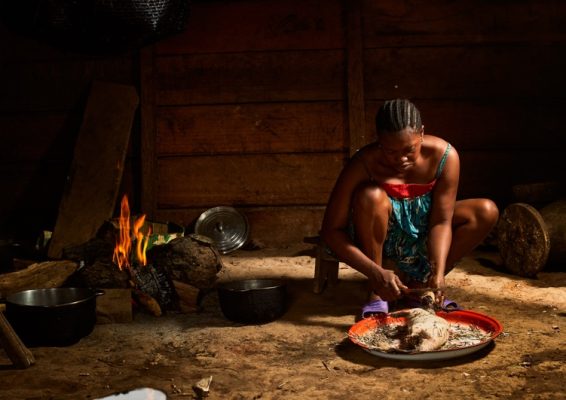
Hunters were urged to avoid contact with blood or other fluids when carrying animal carcasses home after hunting, avoid handling animals found dead in the forest, steer clear of hunting or consuming animals with visible skin lesions or other signs of illness. They were also strongly cautioned against hunting bats or primates, species known to harbour pathogens that can easily transfer to humans.
When butchering animals at home, hunters and food preparers were encouraged to avoid feeding organ meat from wild game animals to domestic animals and to thoroughly clean work surfaces both before and after processing or cooking meat. These measures aimed to reduce the risk of cross-contamination and spreading harmful pathogens.
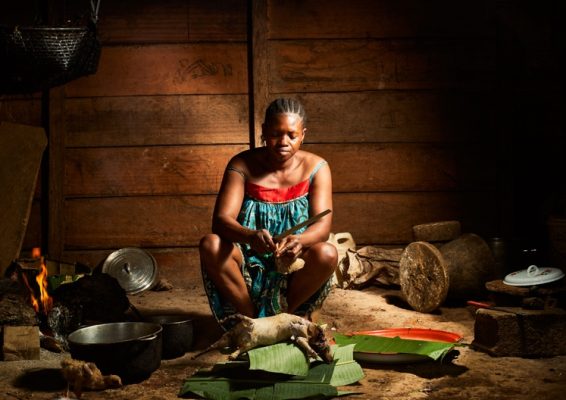
The project team organized a collaborative “co-creation” workshop, bringing together community leaders, health personnel and hunters from eight surveyed villages. The goal was to develop practical interventions that would encourage safer practices in wild meat handling.
During the workshop, participants brainstormed strategies to foster behavioral change, agreeing that the first step was to raise awareness about the risks associated with interacting with animals and handling wild meat. Among their suggestions were creating audio messages for broadcast via local radio and community loudspeakers.

The researchers also trained community health workers on appropriate messages to share in community meetings, in churches and door-to-door.
Participants recommended that the project create ‘image boxes’ printed visuals with captions designed to effectively convey key messages for these activities.
They also suggested training teachers to educate students about safe practices. The youngsters caught on quickly and were especially fascinated by the new world they discovered under a microscope.
Another innovative idea from the co-creation workshop was to hold a kinga design contest. Hunters were invited to create improved versions of the traditional carriers, focusing on designs that would be more comfortable for long distances and provide better protection against contact with animal blood and other fluids. The winning designs are now undergoing testing and refinement.
People took the messages to heart. A follow-up survey after the behavioral change campaign found the percentage of people who said they were concerned about contracting zoonotic diseases from contact with animal fluids increased from 7% to 46%.
Behaviors also changed. Those who said they would leave animals found dead in the forest increased from 30 to 70%, and those who said they wash their hands after handling wild meat rose from 41 to 65%.
Although the project has ended, researchers hope the messages will continue to spread among the villages, promoting food security while safeguarding people’s health.
“The interventions carried out as part of this campaign were only a pilot, but the results we observed after only a few months show that when people have access to basic, actionable information about reducing risks, they are willing to change their behaviors,” Ickowitz said.
Ickowitz attributed the positive reception largely to the project’s approach, which respected people’s need to hunt for food rather than seeking to disrupt them. ”Unlike many organizations, we didn’t ask people to stop hunting. Instead, we acknowledged the importance of wild meat in their diets and livelihoods while raising awareness about the associated risks and how to mitigate them,” Ickowitz explained.
“Once people understood we weren’t trying to take away their way of life, they were far more receptive to the information and practical recommendations.”
For more information, please contact Amy Ickowitz, CIFOR-ICRAF Senior Scientist, at: A.Ickowitz@cifor-icraf.org
The work described here was funded by the German Agency for International Cooperation GmbH, Deutsche fur Internationale Zusammenarbeit (GIZ) as support to the International Alliance against Health Risks in Wildlife Trade with additional funding from United States Agency for International Development ‘s Forestry and Biodiversity Office,
We want you to share Forests News content, which is licensed under Creative Commons Attribution-NonCommercial-ShareAlike 4.0 International (CC BY-NC-SA 4.0). This means you are free to redistribute our material for non-commercial purposes. All we ask is that you give Forests News appropriate credit and link to the original Forests News content, indicate if changes were made, and distribute your contributions under the same Creative Commons license. You must notify Forests News if you repost, reprint or reuse our materials by contacting forestsnews@cifor-icraf.org.

